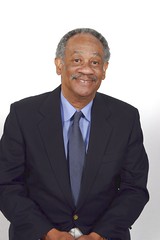Angry physicians are rapidly becoming an epidemic in the Health Care Industry. Anger is a very common obstacle within many companies, hospitals, governmental agencies, prisons and schools. Studies show that aggression and violence in the workplace increases absenteeism reduces productivity, lowers morale and increases an organizations liability.
There is general consensus that hospitals throughout the nation are experiencing an alarming increase in person-directed aggression. The worst kept secret in hospitals nationwide is the widespread tension and conflict between physicians, nurses, physician assistants, nurse practitioners, administrators and other ancillary staff such as inhalation therapists and nurse anesticists.
Workplace stress is par for the course in almost all areas of inpatient hospital care. It is not reasonable to expect an absence of stress in Emergency Rooms, or among Cardiologists, Surgeons, Neurologists, Gynecologists, Oncologists and most other critical care specialists. However, medical staff, working in any of theses areas of specialization can and should be expected to be able to recognize and manage their own stress rather than have it turn into anger, abuse or person-directed aggression.
The nature of the work in all of the areas mentioned is, in itself stressful. There are however, additional stressors which until recently, have not been adequately addressed. These issues include the debilitating stresses placed on all hospitals by the constraints of Managed Health Care. Physicians are no longer able to provide the level of care to their patients which are needed. Rather, they must see/beg for permission from some non-physician (MBA) at the end of an 800 line to approve or disapprove of each procedure based on cost. Therefore, doctors tend to displace their frustration, anger and stress on to nurses and other less status members of the treatment team including technicians and ancillary staff.
Hospitals are being forced to close Emergency Rooms because of a lack of adequate funding which adds to staff stress and patient distress. Patient care is no longer based on the needs of the patient but instead on the cost of the procedure. This is demeaning to physicians and life threatening to patients. Unfortunately, patients are angry at the physicians for not providing the care needed without recognizing the current limitation placed on physicians by the patients’ own health care plan.
A closer look at angry physicians
A recent ACPE Physician Behavior Survey reported the following:
•Over 35% of Hospital Executives report problems with physician behavior monthly, weekly, or daily.
•The most common problems reported include:
1.Disrespect (83%)
2.Yelling (41%)
3.Insults (37%)
4.Physical abuse—including throwing objects (9%)
In this same Physician Behavior Survey:
•Problems with physician behavior most often involves conflicts with:
1.Nurses, physician assistants, etc. (57%)
2.Other physicians (15%)
3.Members of hospital administration (14%)
•It was reported that the majority of the physician behavior problems mention before stem from the following:
1.Conflicts between physicians and staff (36%)
2.Physicians who are feeling frustrated & vulnerable due to organizational changes (26%)3.Physicians who refuse to embrace teamwork (5%)
Hospital executives believe that problematic physician behavior is:
•Under-reported because employees fear reprisal (30%)
•Only reported when a physician is completely out of line & serious violations occur (50%)
In the past several years, hospital organizations have attempted to deal with “disruptive” and angry physicians by:
•Meeting with physicians to discuss their problems (95%)
•Issuing written warnings to a physician (68%)
•Ordering a physician to see counseling or psychotherapy (53%)
•Terminating the physician’s employment (36%)
Stress is one of the most predictable precursors of anger. When stress is ignored or not managed properly, anger is one of the most common side affects. Physicians are facing a greater amount of frustrations than ever. Here are some of the increasing stressors:
1.Increasing patient loads
2.Increasing malpractice costs
3.Increasing complexity of healthcare system, hospital bureaucracies.
4.Dependence on competence & preparedness of support staff (nurses, technicians, etc.
5.Diminished autonomy
6.Difficult patients (chronic pain, drug-seeking, mental illness, etc)
Here are some of the growing economic pressures faced by physicians:
•Flat or declined income
•Increasing cost of medical education & training (plus the burden of student loans)
•Increasing Malpractice premiums
•Increasing office overhead
•Limited hospital resources
In an attempt to address at least part of this quiet crisis in healthcare, the Joint Commission on The Accreditation of Health Care Organizations issued a directed to all hospitals requiring written policies to be in place effective April 1, 2007 to address the issue of “disruptive physicians”. A disruptive physician is defined as those physicians whose “aggressive, abusive behavior” impact patient care and treatment team effectiveness.
Simply put, nurses, physicians and other treatment staff can now formally complain about unfair treatment/abuse from physicians in the course their hospital work. Enlightened Hospital Administrators, Physician Well-being Committees and Hospital Admitting Staff Credential Committees have begun to move quickly to require that doctors who are defined as “disruptive” are required to complete an Executive Coaching/Anger Management® Class to enhance skills in recognizing and managing anger, stress, enhancing assertive communication and increasing emotional intelligence.
George Anderson, MSW, BCD, CAMF, CEAP
Diplomate, American Association of Anger Management Providers
Anderson & Anderson®, The Trusted Name in Anger Management
http://www.andersonservices.com/http://www.aaamp.orghttp://www.linkedin.com/in/geoandersonwww.anger-management-resources.org

